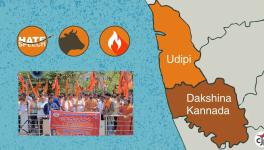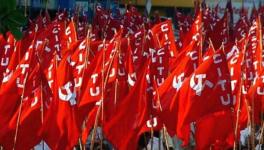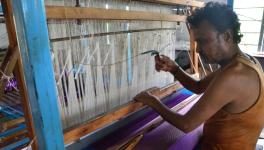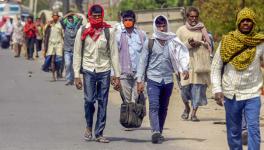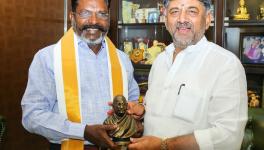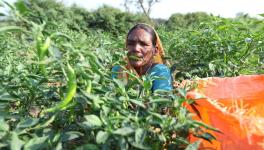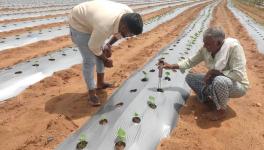Karnataka’s Diversion of Unused District Mineral Funds for COVID Raises Eyebrows
Karnataka’s Minister for Mines and Geology, Murugesh Rudrappa Nirani on Saturday announced that a decision was taken to utilise the District Mineral Foundation (DMF) funds to purchase oxygen tankers, oxygen concentrators, pulse oximetres, to fulfil other emergency needs and set up oxygen generation plants.
DMF was set-up in 2015 with the aim to "work for the interest and benefit of persons and areas affected by mining related operations." This money is meant to improve human development indicators in these areas, such as healthcare, education, women and child development and sustainable means of livelihood.
As for where these medical supplies will be used, Nirani broadly pointed to the four divisions of the state (i.e. Bengaluru, Mysuru, Belagavi and Kalaburgi) and the coastal regions.
As of January 2021, the Karnataka government had already spent around Rs 118 crore out of the DMF specifically toward COVID-19.
But there are serious questions about the legitimacy of such utilisation of the DMF.
“DMF is for the benefit of mining affected areas and people, not mining districts [as a whole],” Rahul Basu of Goa Foundation pointed out. Goa Foundation is a Goa-based environmental action group. “A full district is not automatically a mining affected area if mining is happening in one corner,” he added.
But the announcement by Nirani does not reveal whether COVID relief ismeant exclusively for the benefit of people in mining-affected areas. Notably, all districts in Karnataka are broadly categorised as those with DMFeligibility. Hence, the question about where and for whom exactly the money has been sanctioned and spent remains.
Arpitha Upendra, a doctoral researcher at the European University Institute’s Department of Law, raised the questions of accountability. She asked: “Are the mining affected communities benefiting from this? How is the allocation of oxygen concentrators and relief supplies being allocated?”
She said that the issue with the rules devised for the use of DMF is the “lack of local accountability mechanisms.” For instance, she explained, it does not provide the panchayat or the gram sabha any significant role in deciding how these funds get used. And so, in a crisis like COVID, “holding the government accountable is a challenge,” she added. Upendra’s ongoing research focuses on the implementation of gram sabha’s consent in extractive areas of Odisha.
“DMF should be audited by the CAG [Comptroller and Auditor General of India],” Himanshu Upadhyaya, Assistant Professor at Azim Premji University, Bengalure, said. Today, the DMF trust is audited by private chartered accountancy firms. “In many states, DMF accounts for 2015-16 are still not audited,” he added, pointing to a need to strengthen the accountability mechanisms.
NewsClick mailed its questions to the Department of Mines and Geology seeking clarifications about DMF allocation and utilisation in Karnataka. This article will be updated if and when a response is received.
COVID, HEALTHCARE EXPENDITURE AND DMF IN KARNATAKA
As of May 15, Karnataka officially had 6,05,494 active cases and, in total, lost 21,434 people. Drawing from media reports, it appears that rural areas in the state are disproportionally impacted by Covid-19.
While Bengaluru Urban ranks number one in terms of COVID-19 cases, severely mining-impacted districts like Bellary and Kalaburgi are not far behind, according to government’s COVID data.
Prashanth N Srinivas, a doctor and public health researcher at the Institute of Public Health, called the utilisation of DMF for COVID relief “bad governance.” Srinivas, who has visited mining impacted regions like Kalaburgi, Hospet and Chitradurga, said the poor expenditure profile of special purpose funds such as DMF indicates “poor governance and agenda-setting on appropriate and timely utilisation of such funds.”
Srinivas explained that many mining areas overlap with areas with high poverty, vulnerable and marginalised communities and “equity considerations require immediate utilisation of this money for the specific purpose they are set aside for.” He added that although the pandemic is unprecedented, “there is no shortage of funds in the short term. Rather, an overall lack of value-driven leadership and ability to set-up systems that care are the greatest limitations.”
Last year, when Union finance minister Nirmala Sitaraman asked states to mobilise unspent DMF for COVID relief, the overall unspent DMF balance in the country was around Rs. 23,000 crores.
Upadhyaya too noted how there is “substantial non-spending” when it comes to the DMF ever since it was first set up.
This is a general problem in India, Upadhyaya said, adding: “We impose cess and create these special purpose funds but we fail to utilise them properly.” But, he added, the mere fact that these funds remain unspent does not provide legitimacy to utilising special purpose funds for other purposes. “When we declared COVID as a national disaster, funding should have come from disaster management funds like NDRF [National Disaster Response Fund] and SDRF [State Disaster Response Fund],” he added.
The author is a freelance reporter based in Bangalore. The views expressed are personal.
Get the latest reports & analysis with people's perspective on Protests, movements & deep analytical videos, discussions of the current affairs in your Telegram app. Subscribe to NewsClick's Telegram channel & get Real-Time updates on stories, as they get published on our website.









